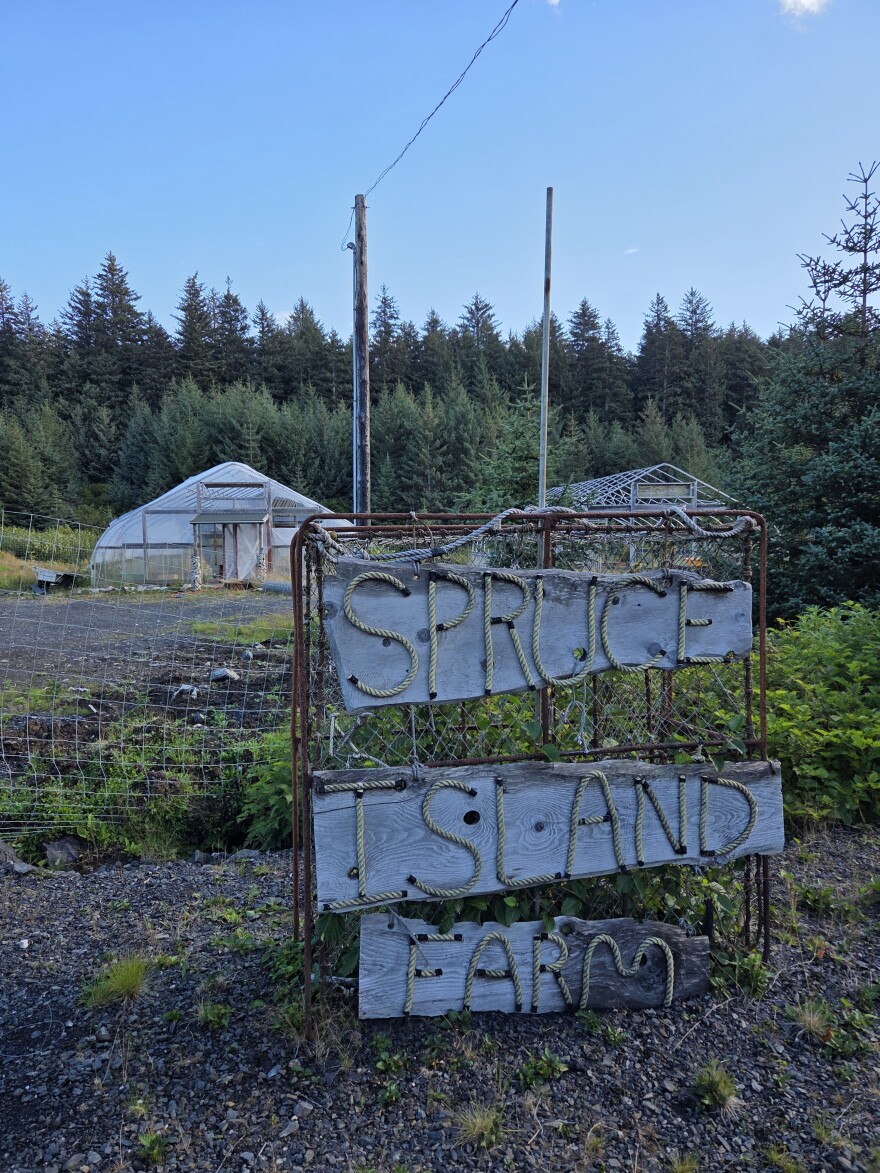Duke Delgado is currently the sole farmer for Spruce Island Farms in Ouzinkie, and oversees the local hydroponics operation with over a hundred little plants. Delgado said he’s always thinking of some new plant or farming tool he can experiment with.
“In that cabinet I could get a head of lettuce from seed to harvest in, like, eight weeks. And that’s what I like about the hydroponics, is they’re quick," Delgado explained. "And some grow quicker than others.”
For example, bok choy. Delgado has also tried squash/zucchinis, cucumbers, garlic, celery, broccoli, cauliflower and strawberries.

He’s had success growing lettuce, bell peppers and tomatoes, jalapenos, herbs, garlic – even coffee beans.
"All these [coffee plants] came from Hawaii. My last order that I got from Hawaii, they came infested and I tried to spray them with insecticide soap," he said. "Well they told me I couldn’t grow coffee here, so I had to prove them wrong. Don’t tell me I can’t do something.”
Delgado isn’t the only one using hydroponics to grow in Ouzinkie. At the local school, a small hydroponics project took root within the last year.
Head teacher Estella Bryans said the school’s dozen students, in grades K through 12, have been tending to a few tiny vegetable plants indoors, year-round. The main ones grow out of one-gallon buckets. Three buckets sit in a bigger round container that looks like a kiddie pool. The water is fed through a drip hose from the school’s water line. The plants aren’t growing in soil – the buckets are filled with clay pebbles.
“The main role of it is to keep the plants in place," Bryans said. "Because they wick the moisture with their roots, so it doesn’t have to stay moist, you can use many other things. These are easy to work with, you just have to wash them off first because they’re dusty.”

The Ouzinkie school also has a hydroponics cabinet, similar to the one Delgado has, with a few shelves of herbs.
Aside from the hydroponics in Ouzinkie, Spruce Island Farms also grows root vegetables like potatoes outdoors in soil. It also has pens for raising chickens. The city of Ouzinkie purchased 60 laying hens earlier this year to provide a local source of eggs for the roughly 110 residents. But as of Sept. 3, they hadn’t started laying eggs yet.

Delgado is able to give away what he produces to locals thanks to a U.S. Department of Agriculture program that reimburses him and farmers in five other communities around Kodiak Island for their produce. That's referred to as the local food purchase assistance cooperative agreement program.
In Ouzinkie it has mostly just been him and sporadic volunteers working with the city and the Kodiak Archipelago Leadership Institute (KALI) on all these agriculture projects for the past four years. Max Lyons, who bolsters sustainable food systems around the archipelago with the institute, said the federal program helps stabilize hydroponic farms like Delgado’s.
“So it’s been a great way to help provide that framework for the farms to grow and expand and get into expanding their markets," Lyons said. "And that all comes down to the farms just benefitting, that access of local fresh produce in the communities. And it’s very difficult to get just in the town of Kodiak, let alone the villages.”
And Lyons said that the Ouzinkie farm is working on a way to produce its own hydroponics nutrients and fertilizer using kelp from a future local kelp farm. Right now the institute provides and ships bags of hydroponic nutrients to Ouzinkie for Delgado to use for his plants.

But after cuts to that federal USDA program earlier this year, the funds coming to Delgado and other Kodiak Archipelago farms are sunsetting at the end of 2026.
“That means I’m going to have to start charging the actual residents," he explained. "They’re going to have to pay for it themselves, other than me getting reimbursed from the government.”
And those USDA program cuts will affect more than just Ouzinkie’s operation. The communities of Port Lions, Larsen Bay, Old Harbor and Kodiak also have hydroponic or local farm operations that are growing produce for island residents as part of the archipelago-wide farming collective called Alutiiq Grown.
According to USDA, before the program funding was cut, the state of Alaska was awarded nearly $1.5 million, which does not include the $13.7 million awarded to Tribal governments in Alaska, through the local food purchase cooperative agreement program.




